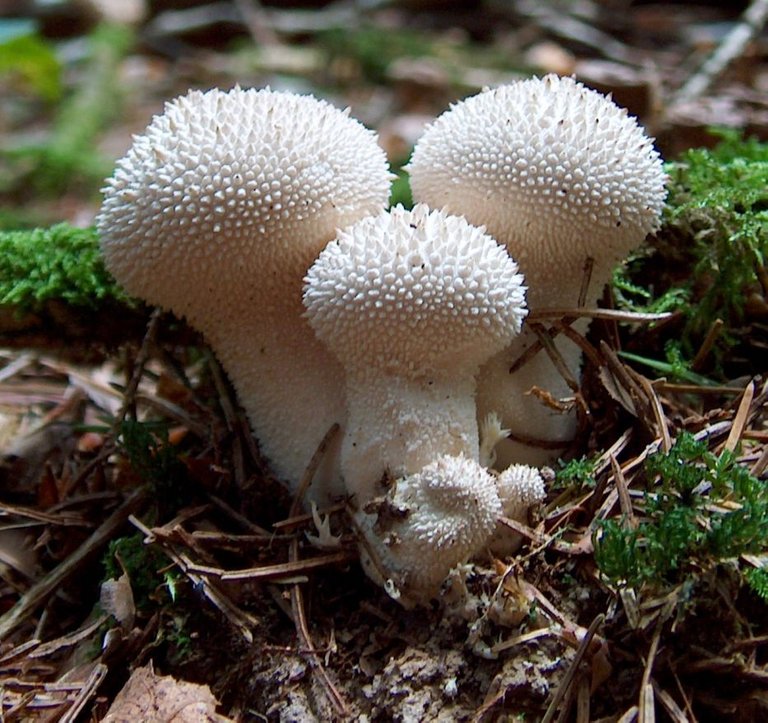
Another Oddball In The Mushroom Family
If you go traipsing around your local wooded area after a decent rain in the summertime and early fall, you are almost certain to see some variation of the genus Lycoperdon - with perlatum, or The Common Puffball, being the most likely culprit in North America.
These very pretty little mushrooms grow on the ground and on very decayed pieces of wood. I have actually only ever encountered them on the latter medium.
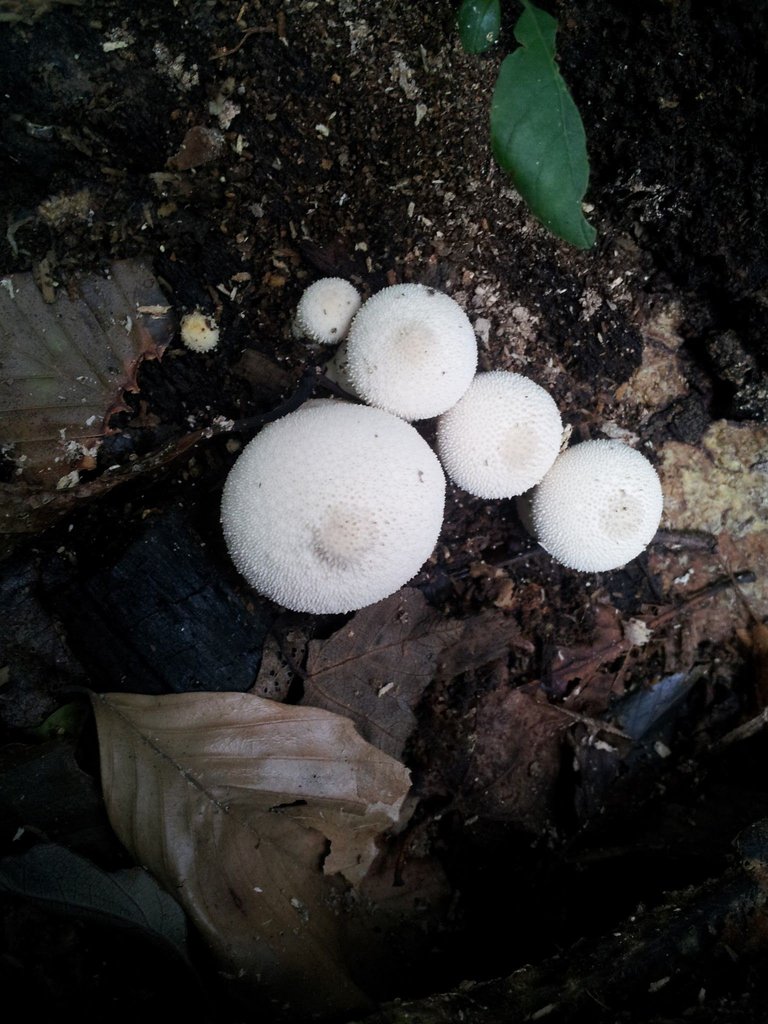
They tend to grow gregariously, in small to large disordered groups.
When they're young, they have many hundreds of tiny spikes all over their surface which makes them look like little jewels.
But as they age, something weird starts to happen.
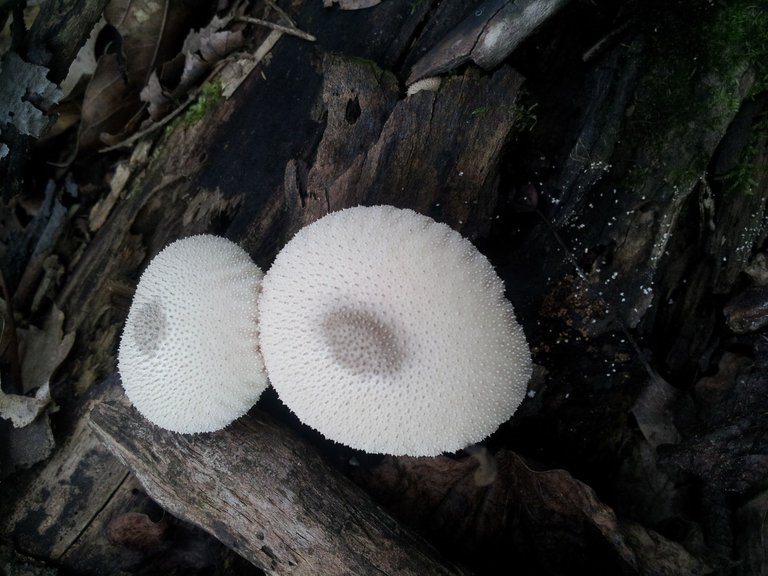
First, you start to see that discoloration at the center of the mushroom.
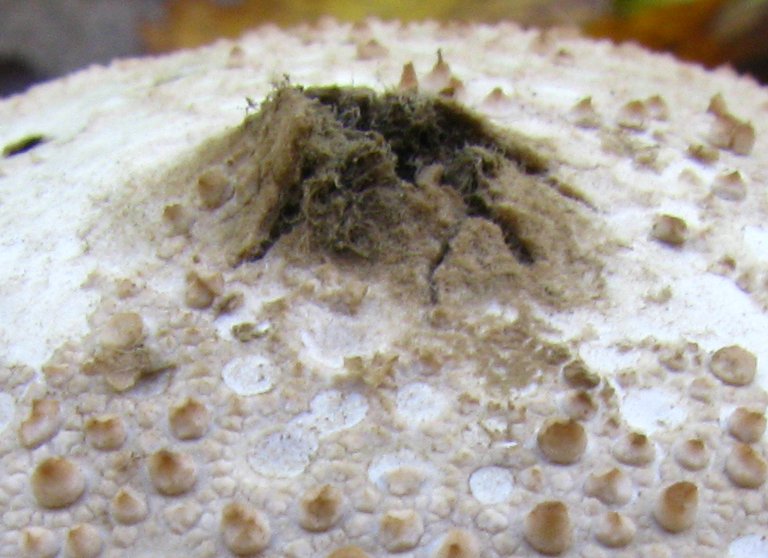
A day or so later, the discoloration turns into this.
Unlike many mushrooms, the whole flesh of Puffballs is spore material. This internal spore-flesh is called, Gleba, and, as disgusting as that sounds, as long as you get to it early, puffball gleba is actually yummy.
At this point in its maturation, if you give the mushroom a good press with a finger, you can cause it to shoot spores into the air, as this youtube video posted by user Alan Esner demonstrates.
By the end of its life cycle the puffball is deteriorated beyond recognition
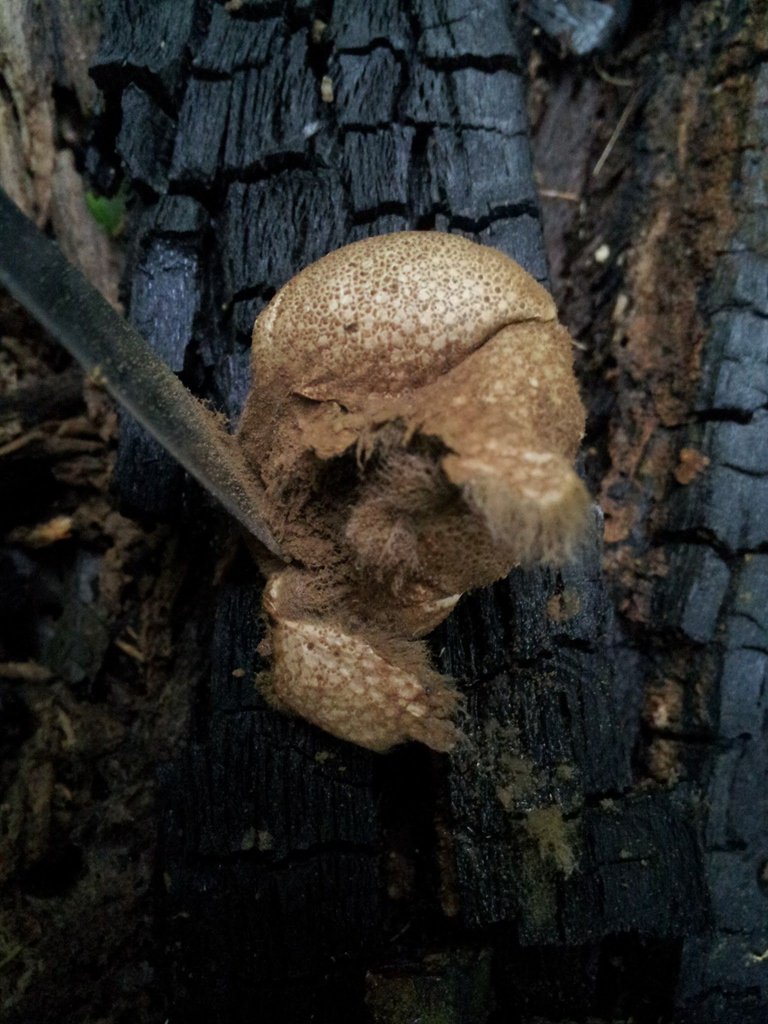
This is a spent puffball.
All of its flesh, the gleba, has converted into mature spores.
Some people are big fans of eating puffballs and consider them an easy first mushroom to identify for culinary purposes, as long as you get to them early.
However, the puffball is actually a dangerous mushroom to casually identify and eat, because of its passing resemblance to the egg form of several deadly poisonous Amanita mushrooms.
The sure way to distinguish between a genuine puffball and a young Amanita mushroom is to bifurcate the mushroom and look inside.
The inside of a puffball should be an undifferentiated white substance:
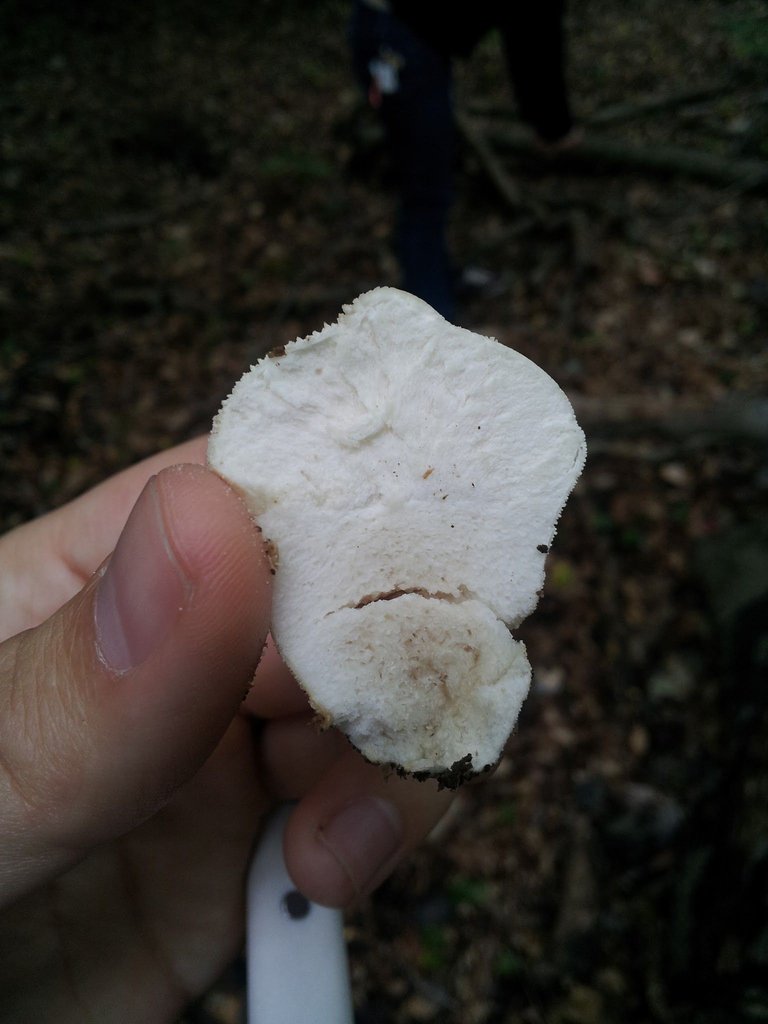
This one is browning a little on the bottom, but looking at the cross section you don't see any structures, just white flesh.
This, on the other hand, is a halved egg of a deadly Amanita species, Amanita phalloides, common in many parts of the world and North America.

It is not a splitting image of a puffball, but to a novice, in the dirt of a forest, it could be mistaken at first.
However, if you cut it in half, you can see the gill structures beginning to develop inside.
That is a the tell-tale sign that you are not dealing with a puffball!
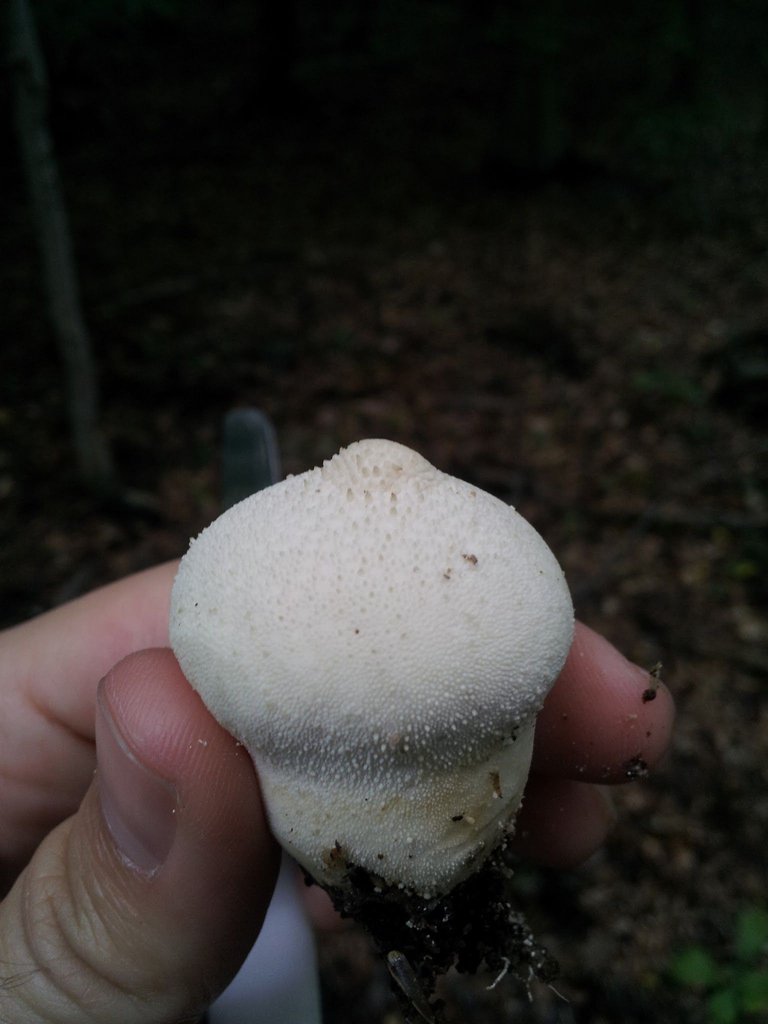
The Common Puffball, along with the Stinkhorn from last post, are great starting mushrooms for identification, because they are fairly common, pretty weird, and pretty easy to identify. Try to look for them next time you go for a walk in the woods!
Next time we will take a look at something a little more exotic.
Cap = N/A
Stem ("stipe") = N/A - The whole mushroom ranges from .6 to 2.4 inches wide by 1.2 to 2.8 inches tall (1.5 to 6 cm by 3 to 7 cm).
Spore Print = Dark Brown - Conventional spore print isn't possible, but as it ages, you can squeeze out the dark brown spores
Ecology ("What it grows on") = saprotrophic (meaning it survives off dead organic matter, usually bits of decayed wood in this case). On the ground or decayed wood.
Distribution = All over North America
Edibility = When fresh, firm and the flesh is pure, undifferentiated white. But repeat after me "we don't eat our finds."
Very dangerous lookalike in the Amanita button/egg. A cross-section necessary to confirm there are no immature gill structures present.
- Other Traits = Covered in delicate white spikes which leave a distinctive patterning on the mushrooms surface when rubbed off. Spore structure is the internal flesh of the mushroom, called gleba, which turns deep brown as the spores mature.
Should I change the name of this blog to "The Amateur Mycologyst?" Let me know your thoughts!
Image Souces:
Image One - Wiki Commons
Image Four - Wiki Commons
Spore Video - Posted By User Alan Esner on Youtube
Amanita Egg From Australian Government Resource
License for spore hole By Dan Molter [CC BY-SA 3.0 (http://creativecommons.org/licenses/by-sa/3.0)], via Wikimedia Commons
Informational Sources:
Michael Kuo's Excellent Website Mushroomexpert.com
https://en.wikipedia.org/wiki/Lycoperdon_perlatum
For A Crash Course On How To Identify A Mushroom Read The Amatuer Mycologist #3
For a Glossary Of Relevant Mycological Terms, Micheal Kuo's Website Provides
It's a firesale of all original, quality content, and I plan on delivering more every day!*
There's my pop-sci blog, soon to be dealing with the conundrum of light's speed.
Piqued #2 - A Crash Course In Space Time
Piqued #3 - A Crash Course Towards The Speed Of Light
Piqued #4 - Enter The Wormhole - A Crash Course
Then there's my series about the exploration of wild mushrooms - most recently an interactive workshop to teach readers how to identify mushrooms themselves
The Amatuer Mycologist #3
The Amatuer Mycologist#4 - Phallus ravenelii - Ravenelii's Stinkhorn
To readers and upvoters - Do you prefer "the mushroomer" or "the amatuer mycologist" as the title?
The former is more fun - the latter highlights that this is mycology and a subset of biology and therefore validates its presence on the science tag.
Any thoughts are welcome.
the amatuer mycologist!
they're the best 'cause they know their mushroomy stuff!
very nice post btw!
Thanks - I know some mushroomy stuff - not nearly as much as I ought to.
click here!This post received a 3.6% upvote from @randowhale thanks to @dber! For more information,
Cool!! I used to love these guys when I was a kid. The only place I could find them was in the woodchips in my Nana's front yard when I was mowing and trimming the hedges. However I remember the plumes of spores sometimes being different colors, from whitish to yellowish or brown. Perhaps the memories have been tampered with by my imagination... but what I know for sure is they seemed like magic to a kid of 10! Never knew they were edible. Anywhoo, I'm a (very) amateur mycologist myself, so I'm happy I discovered your page. I'll be sure to follow :)
P.S. As to the choice of two titles, I like them both equally. "The mushroomer" is a bit whimsical with more association of (perhaps) magic mushrooms, While the Amateur Mycologist also comes off as a bit playful or tongue in cheek but serious at the same time. I guess ultimately I'd lean towards the latter, but I'm only basing it off this one post I've read so my input may not count for much lol
I think I agree with you on the title - there's always a hurdle to overcome when you're talking about mushrooms that you're not just interested in psychedelics, which is certainly something I'd like to avoid.
I appreciate the thoughtful response!
I never thought mushroom could be really interesting :) .. Great job bro !!
Thanks! - I know it's a niche topic - but I really like it - and there's lots to talk about, so there will be many more.
I'm thinking of changing the name to the "Amateur Mycologist" because it is really about mycology, the subsection of biology - and I think that might increase the accessibility on the science tag. But one way or another it will be around.
Peace, Abundance, and Liberty Network (PALnet) Discord Channel. It's a completely public and open space to all members of the Steemit community who voluntarily choose to be there.Congratulations! This post has been upvoted from the communal account, @minnowsupport, by DBER from the Minnow Support Project. It's a witness project run by aggroed, ausbitbank, teamsteem, theprophet0, and someguy123. The goal is to help Steemit grow by supporting Minnows and creating a social network. Please find us in the
If you like what we're doing please upvote this comment so we can continue to build the community account that's supporting all members.
@hr1 - I saw several upvotes in a row from you last week - but on subject matters that were very disparate. And I see on the block that @arhag is proxy voting for @hr1. I'm not 100% sure, but it seems like the voting trail is based on amassing a steady stream curation awards.
If that's the case, then I figured I would use this comment to pitch you - or whoever is voting for @hr1, to continue supporting my posts. I think if you take a look at several, this one included, they should give a good and fairly consistent return. I intend on using randowhale to increase the price on each of the ab initio - and so a vote from @hr1 or @arhag - or their proxy - would come in significantly higher than 0 from the start and get more bang for your buck on the curation endgame.
Beyond that, I think my posts - especially the Mycology and Piqued posts, are of a high quality.
That's my pitch. You'll likely not see this, but seemed worth a try.